Very Frequent Fliers Review the Best Noise-Cancelling Headphones

Abstract defocused bokeh of airplane at airport gate with sun coming out after the rain. Modern travel concept and wander lifestyle at sunset. Focus on raindrops with warm vintage filtered look
What are the best noise-canceling headphones to wear in-flight? We scoured FlyerTalk’s Travel Technology forum to find the best noise-canceling headphones out there. Even if you’re not flying right now, these are a great investment for your flying future, or for drowning out the noise of everyone you’re quarantined with.
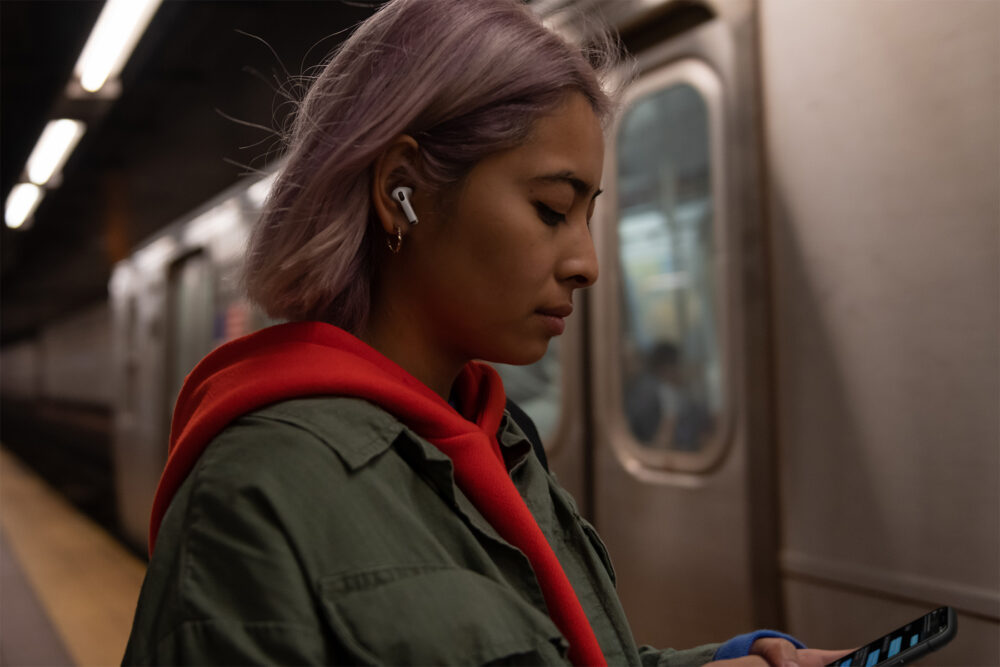
Image Source: Courtesy of Apple
Pocketable Sound with a Good Microphone
The Apple AirPods Pro comes from a brand everyone knows, and are a major step up from the previous generation of AirPods. You can toggle between Active Noise Cancellation and Transparency modes. They have active EQ, as well, as connect to Siri so you don’t ever really have to take them out. Some more positives?
- They’re pocket-sized. The cases are basically the smallest on the market.
- Easily swaps between devices, especially if you have all Apple products.
- There’s a good microphone, so you don’t have to switch to your phone to talk.
The drawbacks? Well, they’re an Apple product first of all, and some people just don’t like Apple. Plus, the battery life isn’t great—it tends to start at four hours and gets worse as the AirPods age—and the noise-cancelling functionality leaves a bit to be desired since they’re not over-ear headphones. Some have also noticed that they don’t fit every type of ear properly.
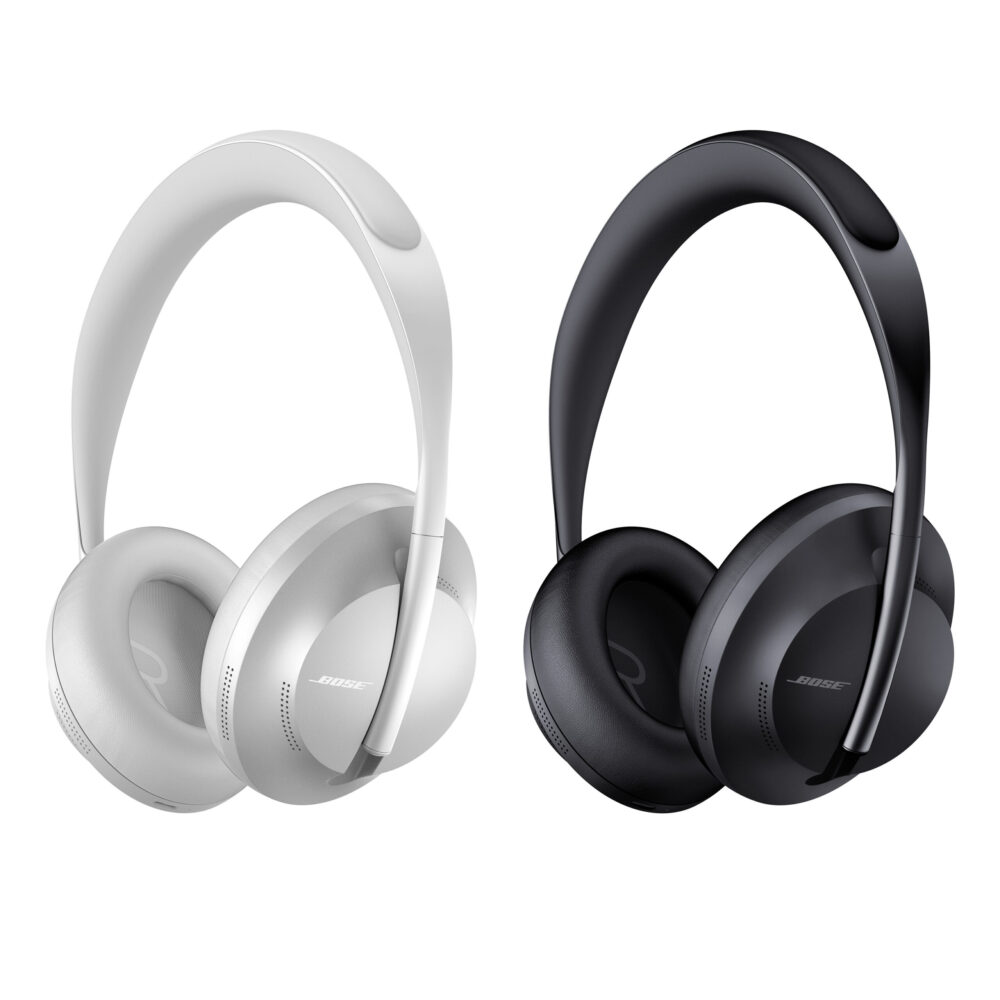
Image Source: Bose
Modern Charging and Good Performance
Bose’s over-ear Smart Noise Cancelling Headphones 700 offer 11 different levels of noise cancellation. Active EQ and solid bass response help music sound the same at every level, and when you need to make a phone call, you’ve got a four-microphone system at your fingertips. There’s also an AR functionality built-in that can personalize what you hear based on where you are.
- They charge with the modern era, using a USB-C port.
- You can connect two devices to switch back and forth between.
- The microphone works well, and the speakers easily isolate someone’s voice on the phone.
The drawbacks? They’re bulky over-ear headphones, so if you’re prone to sweating, it could get sticky. And thanks to the size, people with large ears can sometimes get a callus from wearing them.

Image Source: Bose
In-Ear Effective Noise Cancelling
These headphones, the Bose QuietComfort 20 Acoustic Noise Cancelling Headphones, were the company’s first foray into in-ear noise-canceling technology. You can toggle the noise canceling and “aware” modes with one button, and easily switch to calls from your media. The proprietary StayHear earbud tips make sure that whether you’re sleeping or running around, they won’t fall out.
- Because they’re in-ear and fit well, they’re good to sleep in.
- A full charge lasts a long time.
- The noise-canceling aspect is superior to Sony products.
The drawbacks? They seem to be prone to breaking. One FlyerTalker’s dog chewed theirs up, and others reported them only lasting a few years before falling apart. Plus, they’re not wireless, which can make them feel like more of an annoyance than other headphones. And they’re not always the most comfortable; one FlyerTalker reported that after wearing them for 10 minutes, they felt an unpleasant pressure in their head. Another couldn’t take it after two or three hours.

Image Source: Bowers and Wilkins
High Performance that Gets Better with Time
A long battery life, superior noise cancellation, and magnetic replaceable earpads have helped Bowers & Wilkins’ PX Wireless Headphones quickly become a favorite—and stylish—option for travelers. There’s a full suite of intelligent controls, as well, which means you get to use nearly every part of these over-ear headphones for something unique.
- Extra-long battery life, perfect for staying on the go with music.
- Clear sound so you can hear everything in the song.
- The app has a vocal filter, which means you can block out everything except who’s talking to you.
- Plastic-free parts and leather earpads are extra comfy, and only get better with use. Plus, the earpads are replaceable.
The drawbacks? Sometimes pairing can be a challenge, as one FlyerTalker discovered when trying to pair with their iPhone. Once they’re paired, putting them on for the first time can be uncomfortable; they start out tight or heavy but ease up after a couple of hours.

Image Source: Sony
The Perfect Headphones for Just Music
Sony’s in-ear WF-1000XM3 Wireless Noise-Canceling Headphones are designed specifically to focus on the music you’re hearing. The battery lasts for 24 hours, so long flights are a breeze—as long as you don’t need to talk to anybody through them.
- Sound quality for music is better than Bose.
- These are completely cordless.
- They come with multiple earbud sizes and styles to get the best fit.
The drawbacks? If you’re planning to make calls on these headphones, both the mic and call quality are terrible. And if you want to tap the touchpad to listen to someone speaking, you have to cycle through a linear set of options to get there. The case can be a bit bulky, as well—it’s about twice the size of the Airpod case.
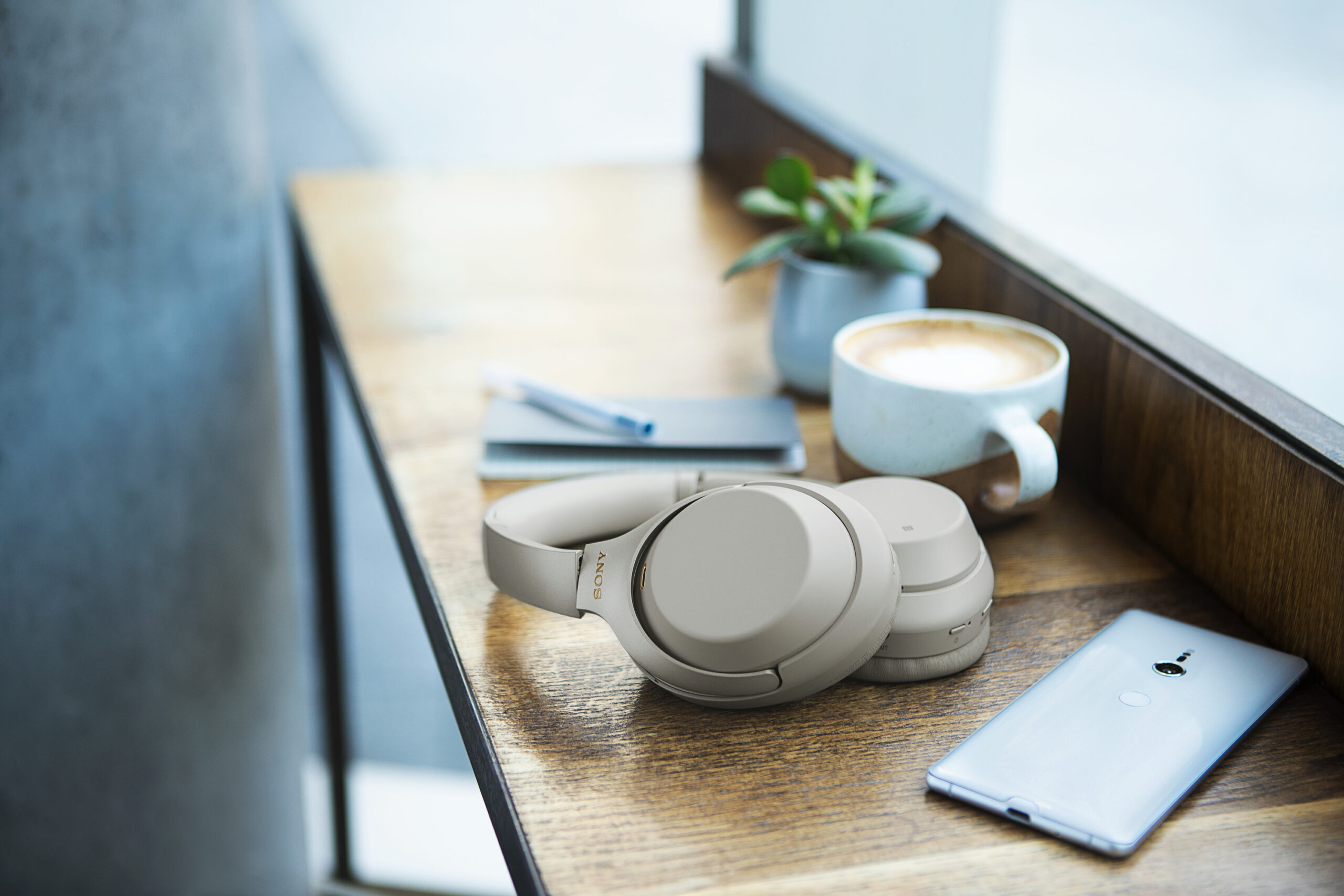
Image Source: Sony
The Headphones that Constantly Sell Out
Take everything from Sony’s WF-1000XM3 above and turn it into an over-ear product, then add a system uniquely designed for air travel, and you’ve got the WH-1000XM3. They have Bluetooth and NFC functionality, and also adjust ambient sound based on where you are and what you’re doing.
- Like their in-ear cousin above, these over-ear headphones have superior sound quality to Bose.
- The earpad material creates better noise-cancelling abilities.
- Noise-cancelling adjusts dynamically to atmospheric pressure.
The drawbacks? They sell out fast, especially when they go on sale. Some FlyerTalkers have struggled with the controls, both learning them and getting them to work properly. Like the in-ear version, the mic and call quality are less than ideal. And that earpad material that helps with noise-cancelling has its own drawback: It gets pretty warm after a short period of use.

Image Source: Etymotic
Technology that Shuts Everything Else Out
The wired in-ear ER-3 Earphones from Etymotic Research have one job, and they do it well: to isolate all other noise for the simplest and highest quality listening experience. They’re necessarily minimalist; you’re not going to struggle with Bluetooth connections or apps or phone calls. You’ll just listen.
- They’re very small and as comfortable as a foam earplug.
- Have incredibly strong isolating power, turning a jet into a practically silent room.
- You don’t have to worry about pairing to anything.
- Excellent SQ, and no extra pressure on your eardrums.
The drawbacks? They have a cord. And not just to connect the earpieces around your neck, but they’re a complete wired experience connecting to the audio output of your device. That also means you don’t pair them to anything, which can be both a positive for quick use and a negative for tech integration. When you put them in, they go deep into your ear canal—which is exactly where you’re not supposed to put a Q-Tip, and can feel really strange.

Image Source: Klipsch
A Powerhouse for Isolation
Klipsch’s X12i In-Ear Headphones have the same isolation power as the ER-3s, with added durability in the construction and are incredibly lightweight. And the small size doesn’t sacrifice audio quality either; owners of these headphones love the full range of sound that comes with it.
- Excellent sound quality
- Isolates at 36 decibels or better, leaving you alone with your music
- Small and made from good-quality materials
The drawbacks? Like the ER-3 above, they’re corded, don’t pair to anything, and need to go deep in your ear canal in order to be effective.
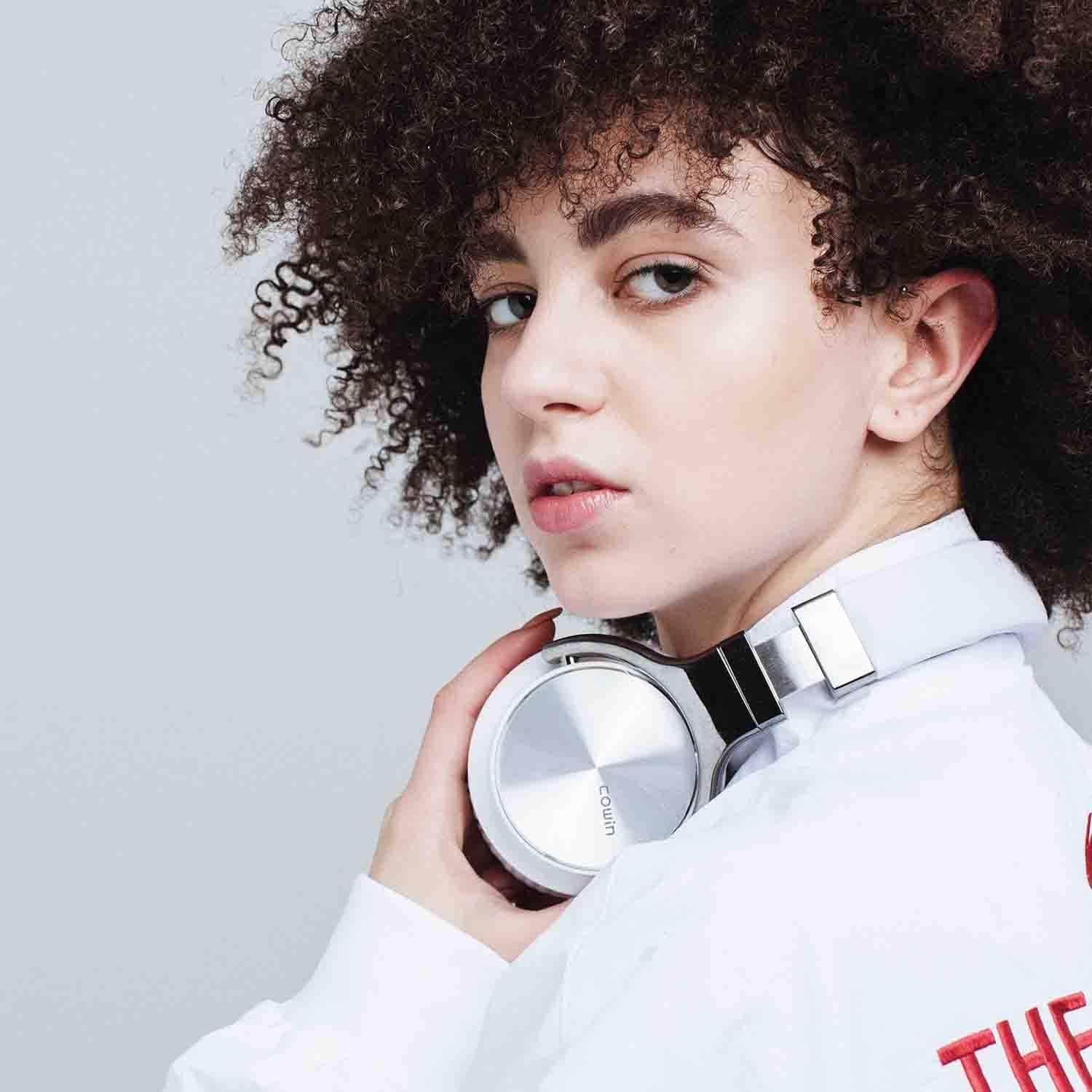
Image Source: Cowin
Low Cost Without Sacrificing Quality
The COWIN E7 PRO Active Noise Cancelling Headphones are over-ear headphones on a budget. They’re Bluetooth enabled, have a full range of sound quality, and are designed to be comfortable on both your head and ears. On a full charge in Bluetooth mode, they run for 30 hours—perfect for long flights.
- These cost about $50—around seven times less than other leading brands.
- Even though they’re cheap, the sound quality and noise-canceling capability is still good.
- Construction is top-notch regardless of the lower price point.
The drawbacks? They’re $50, and you get what you pay for. Even though the sound quality is still pretty good, the more expensive noise-canceling headphones are still better. One FlyerTalker said the sound quality is about 80 percent of Bose’s quality.
An Inexpensive Set Good for Beginners
Xiaomi’s 3.5mm Noise Cancelling Earphones are inexpensive but still stylish, and come with two levels of active noise cancellation. They take two hours to charge but then run for 12. And even though they’re corded in-ear headphones, the company smartly includes a clip to keep the cord out of your way.
- The price hovers around $45, which is a great value for good quality.
- Has a metal design that’s pretty durable and constructed well.
- Doesn’t sacrifice sound quality with noise cancellation.
The drawbacks? The low cost is telling of the quality, and although they’re still a good product, reviewers have noted that the treble highs can sound a little too sharp and bass is muted. The storage bag the set comes with is too small to stash them away quickly.
A Safe Pair for a Budget
The foldable, Bluetooth-enabled TT-BH060 headphones from TaoTronics are decent if you’re trying to keep costs low. They’re over-ear for extra noise cancelling power, and can run for two hours after just five minutes of charging.
- Ideal for spoken word tracks, like podcasts or audiobooks.
- They’re pretty inexpensive at around $70.
- Music is mostly balanced, meaning the low cost doesn’t sacrifice much quality.
- The headphones have a stable Bluetooth connection.
The drawbacks? Again, you get what you pay for. The bass can be muddled and the treble a bit too tinny. The Bluetooth has a 15-foot range, shorter than more expensive headsets. The case isn’t super sturdy, and like many other over-ear headphones, the earpads start to warm up almost immediately.
Have you tried any of the noise-cancelling headphones on this list? Hop over to the forum thread and let FlyerTalkers know what you think.





















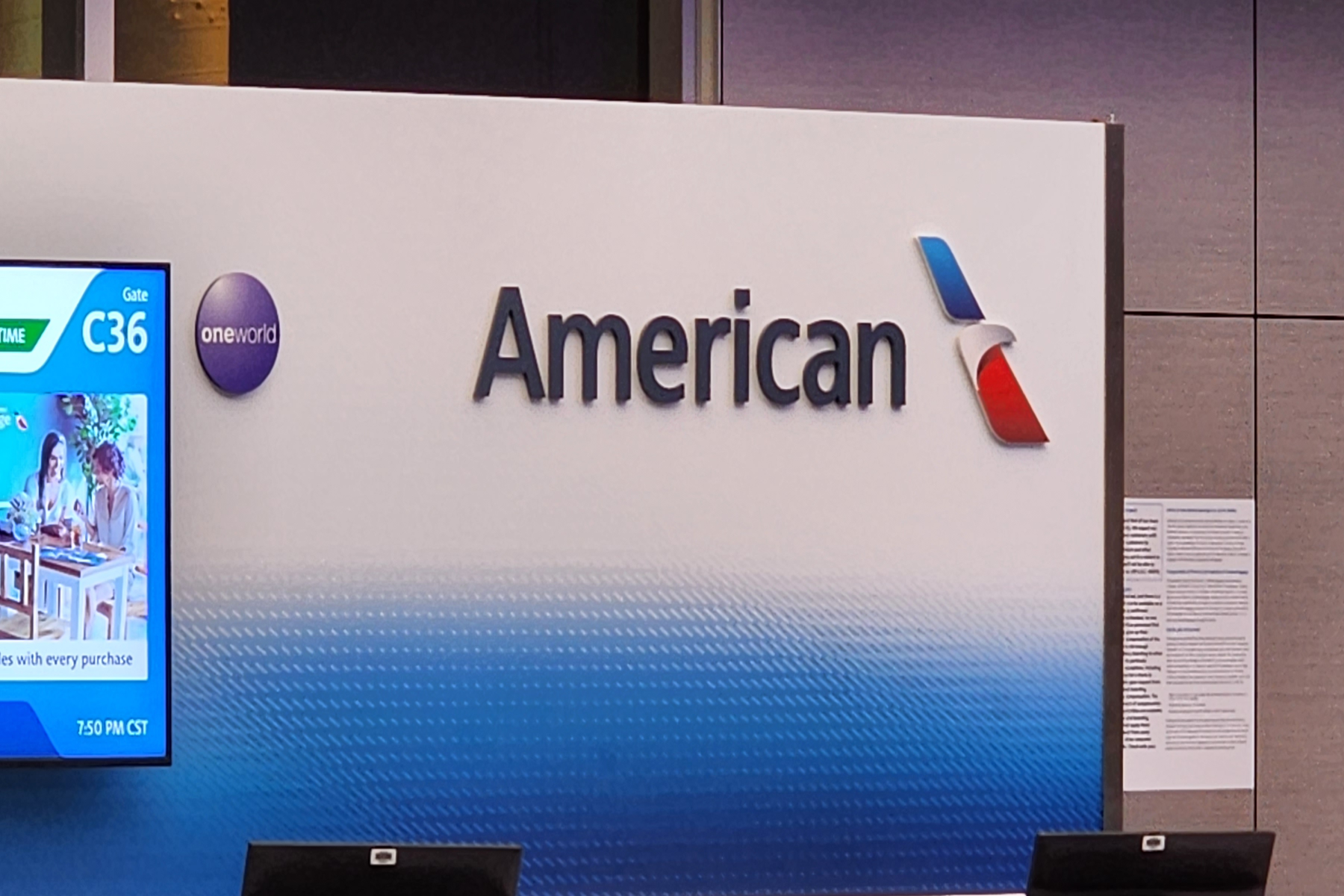

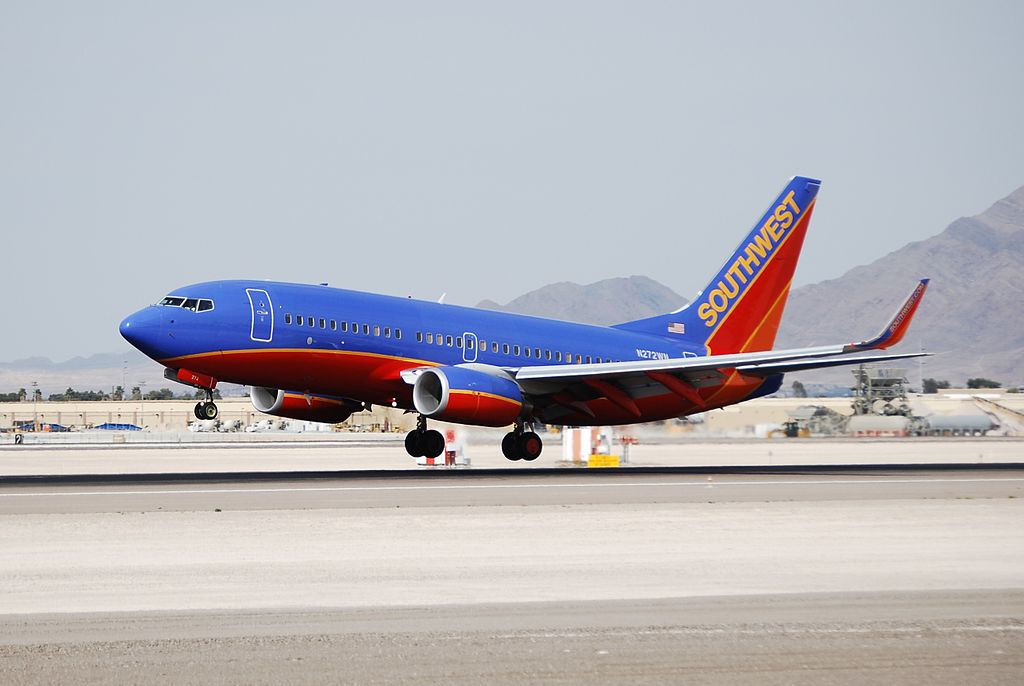

I’m surprised not to see a mention of the Bose Quiet Control 30 earphones, given how many of these I see around people’s necks on the plane. Battery life = good, fine for long flights. Slow to charge and micro-USB port is outdated. Comfort = excellent. You get used to the collar surprisingly quickly and can sleep on your side. (The collar is no good if you have a large neck but it’s fine for most people.) Sound quality (music) = excellent. Sound quality (speech, conference calls) = excellent. Microphone quality (calls, conference calls) = terrible, do not use, avoid, a disgrace from Bose. Durability = poor. The rubber materials used in the headset last around eighteen months. And most importantly: Noise cancellation = excellent. Reference level. The basis for my comments above is having used the QC30 from gate to gate for approximately 500 flights including short haul and long haul, day flights and night flights.
I’ve used the QC20i for years with noise reduction on. Decent battery life and for very long flights I keep it charging at the same time its being used. That way its fully charged when you get off the flight. I can sleep in any position since sits in ear but not too deep, just have to be very careful when adjusting your seat to make sure cable(s) dont get caught or damaged(quite delicate). Can also use for audio but my main interest is in sleep so I rarely use audio. I don’t know how the flight attendants put up with the ambient noise on flights. Its terrible on all planes which I have flown on. I tried the in ear noise blocking Etymotic but dont use them, not sure how the Shure will be for 10 hours. Moderator please delete incorrect posting of this on the Grand Princess article
And once again this community completely disregards the existing actual pro and stage and studio quality products and instead thinks that what is marketed as high end by companies like Bose is actual high "end". Instead I recommend expanding the horizon to products like those from Shure, be it their in-ear wonders with 37 dbA passive (!) sound isolation from the SE and KSE series, (recommended series 500 and above) cabled or with the wireless adapter or the new over ear headphone I have not tried. Even in the cockpit the beloved Bose solutions are inferior to some quality IEM, maybe with custom shells, and while yo do see a few pilots in the know, most still have no idea how far from perfect the products they chose to throw money at are. Shure is expensive, too, but at least actually worth it.
For those with hearing aids..... I have been using NC headphones since 2006. Using Sony (in ear) Sennheiser, Bose Q15, Phillips (in ear) Bose (in ear) and cheap Amazon ones. All worked except the Sennheiser ones which were on the ear rather than over the ear and useless. But since 2016 I have been wearing behind the ear hearing aids all the time, and this is never thought about by reviews. This immediately makes the only option to be over the ear, or rely only on the hearing aids themselves (which aren't bad actually). So I then invested in a tailor made Bluetooth adapter for about £55 which turned the Bose Quiet 15 ( circa 2010 vintage) into wireless Bluetooth headphones with microphone added as well. It replaces the plug Inn cable on the Q15 very neatly. Result is fantastic for me. Perfect noise cancelling and a super sensitive microphone so I use the setup for Bluetooth conference calls on my pC as well as for flying. Have to revert to the cable though if I want to connect to in flight entertainment.
You posted a link I had written about pairing the B&W PX headphones out of context as I later made a post in the same thread which explained that I was doing it incorrectly. There is no pairing issue! https://www.flyertalk.com/forum/30228150-post26.html In addition my post was made back in in 2018 and the PX headphones have since been discontinued and replaced by the PX5 and the PX7. https://www.bowerswilkins.com/headphones/px5 https://www.bowerswilkins.com/headphones/px7